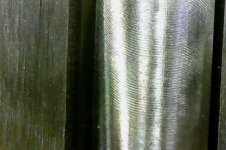Bob Gray
Plastic
- Joined
- Nov 13, 2007
- Location
- Redwood City
Hi, see attached pictures. The part is made from 304 stainless steel. As you can see from the attached pictures I'm getting marks on entry and exit. The application is vacuum and I'd like to get the surface finish so I do not have to spend time on secondary finishing if that is possible. Different brand of end mill, more time in the machine etc is not a problem.
Right now I'm running an Imco M9 series 1/8th end mill 4 flute. I use a slotting operation to remove the bulk of the material leaving .005 on the floor for cleanup. The I use a 2D contour to to cut the sides to finish dimension. I've tried a Harvey tool 1/8th with corner radius but get a similar result. Then a finish for the floor to minimize cutter deflection. Speed-feed plus chip load is in the pictures with plunge etc..
Thanks





Right now I'm running an Imco M9 series 1/8th end mill 4 flute. I use a slotting operation to remove the bulk of the material leaving .005 on the floor for cleanup. The I use a 2D contour to to cut the sides to finish dimension. I've tried a Harvey tool 1/8th with corner radius but get a similar result. Then a finish for the floor to minimize cutter deflection. Speed-feed plus chip load is in the pictures with plunge etc..
Thanks






